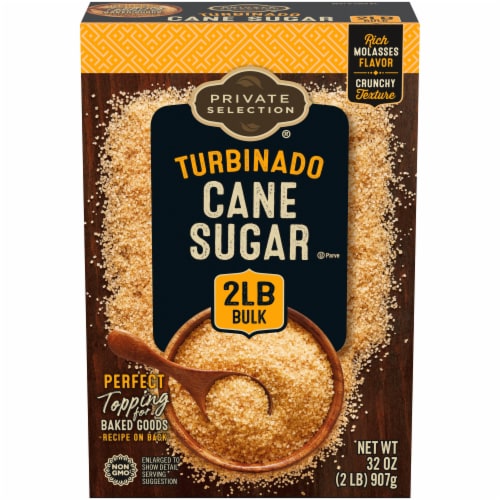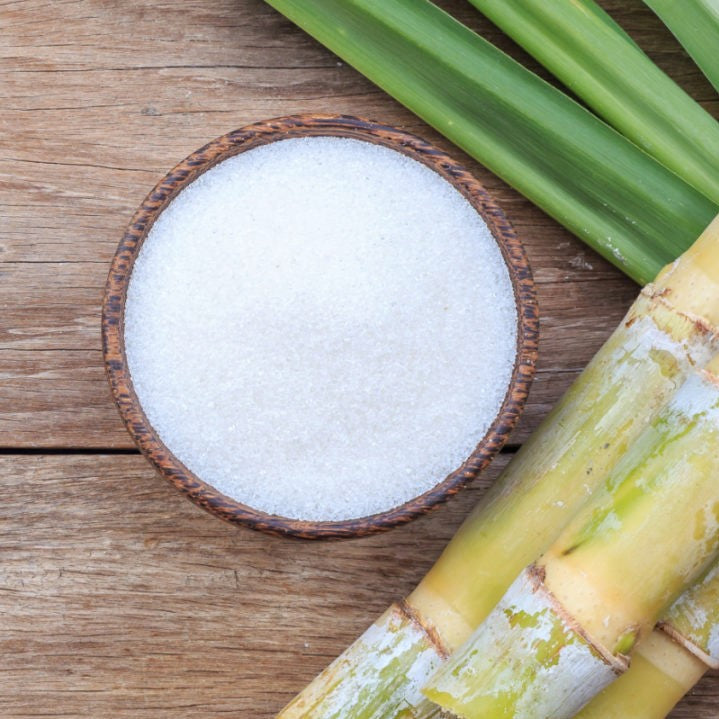A Comprehensive Overview to the Ecological Influence and Sustainability Practices in Walking Stick Sugar Processing
The environmental impact of cane sugar processing provides a complex array of challenges that warrant careful evaluation. From soil degradation and excessive water use to the carbon impact connected with growing and production, the consequences of traditional techniques are significant. What particular practices can be executed to strike a balance between productivity and environmental stewardship?
Overview of Walking Stick Sugar Processing
Cane sugar processing involves a series of methodical steps that change sugarcane right into refined sugar. Originally, collected sugarcane is transported to processing facilities, where it undergoes cleansing to eliminate soil and debris. Following this, the walking cane is crushed to extract juice, which is after that cleared up by eliminating impurities via heating and the addition of lime.
The made clear juice undertakes dissipation, where water is removed to focus the sugar content. This concentrated syrup is after that crystallized via cooling, enabling sugar crystals to develop. These crystals are divided from the staying syrup using centrifugation, resulting in raw sugar. To attain refined sugar, the raw product goes through additional purification procedures, which might include washing and filtering system to eliminate continuing to be contaminations and color.
The last item is after that dried out and packaged for circulation. Throughout this whole process, maintaining effectiveness and quality assurance is necessary to ensure the sugar meets market requirements. Each action in cane sugar processing not only contributes to the end product yet additionally has implications for resource usage and waste generation, establishing the phase for conversations on sustainability and environmental effects related to sugar manufacturing.
Environmental Difficulties of Manufacturing
The production of walking stick sugar offers a number of substantial environmental difficulties that warrant focus. One key concern is the considerable use of agrochemicals, including chemicals and fertilizers, which can cause dirt destruction, biodiversity loss, and contamination of neighborhood water resources. The overflow from sugarcane areas often carries these chemicals into nearby ecological communities, disrupting marine life and affecting the health of communities reliant on these water bodies.
Another challenge is the high energy consumption associated with sugarcane processing. The boiling and refining stages require substantial warm, primarily generated by burning nonrenewable fuel sources, adding to greenhouse gas exhausts. In addition, the large land area required for sugarcane cultivation can result in deforestation and habitat destruction, further intensifying climate modification and threatening wildlife.
Furthermore, the labor practices in some regions elevate moral problems, as workers might encounter inadequate working conditions and inadequate incomes. This scenario commonly continues a cycle of destitution in regional communities. Cane Sugar Processing. Addressing these ecological difficulties is crucial for creating much more lasting practices in walking cane sugar manufacturing, eventually benefiting both the setting and the areas included in this sector
Water and Land Usage Influence
Water sources and land use are vital elements in the walking stick sugar market that dramatically impact the environment. The farming of sugarcane needs significant water input, with price quotes recommending that it can consume up to 2,000 litres of water per kilogram of sugar created. This extensive usage of water typically results in deficiency of local water resources, affecting not only the sugarcane plantations yet also surrounding ecological communities and communities that count on the same water resources for agriculture and domestic use.

Moreover, land usage for sugarcane growing can bring about deforestation and the conversion of natural environments right into monoculture vineyards. This practice reduces biodiversity, interrupts neighborhood environments, and adds to dirt destruction. The development of sugarcane fields commonly elbows in on useful farming land, developing competitors for sources in between food and biofuel manufacturing.
Lasting techniques, such as enhancing watering techniques and implementing plant turning, are important to minimize these influences. By taking on a lot more efficient water use and land monitoring strategies, the walking cane sugar sector can decrease its eco-friendly impact, making certain an equilibrium in between agricultural performance and ecological preservation.
Greenhouse Gas Emissions
Greenhouse gas exhausts stand for a substantial ecological problem within the walking stick sugar handling market, specifically as farming techniques broaden to meet worldwide need. The growing of sugarcane, a crop that flourishes in exotic climates, depends heavily on artificial plant foods and chemicals, which add to laughing gas exhausts. In addition, land-use modifications, consisting of logging for brand-new sugarcane ranches, release co2 saved in vegetation and dirt.
During processing, power usage is one more major resource of greenhouse gas discharges - Cane Sugar Processing. Lots of sugar mills utilize nonrenewable fuel sources to power machinery and generate heat, causing substantial carbon footprints. Furthermore, the transport of raw sugarcane and completed items includes layers of exhausts with gas burning in automobiles
The advancing effect of these exhausts exacerbates climate modification, posturing risks not only to the setting yet also to the long-term viability of the industry. Stakeholders should identify the immediate need for extensive techniques that attend to these exhausts. This involves examining existing agricultural methods, refining approaches, and transportation systems to identify locations for renovation and reduction. Dealing with greenhouse gas exhausts is crucial for cultivating an extra sustainable walking cane sugar industry in a transforming environment.

Lasting Practices and Innovations
Sustainable methods and advancements are increasingly important in the walking cane sugar handling sector as stakeholders look for to reduce environmental impacts while maintaining efficiency. One substantial innovation is the execution of incorporated crop management, which enhances resource usage by combining soil monitoring, bug about his control, and plant turning techniques. This method improves yield while minimizing chemical inputs and protecting dirt health.
Moreover, the adoption of renewable resource sources, such as biomass from sugarcane residues, has actually gotten traction - Cane Sugar Processing. By converting waste items right into power, processing facilities can decrease their dependence on nonrenewable fuel sources, therefore lowering greenhouse gas exhausts
Water monitoring methods have actually additionally seen improvements through the recycling and reusing of water in pop over to this site processing plants, considerably decreasing freshwater usage. Advancements in innovation, such as precision farming, allow farmers to keep an eye on crop wellness and resource usage better, making sure lasting farming methods.
In addition, certification programs like Fair Trade and Rainforest Partnership encourage eco accountable farming practices and promote social equity within the supply chain. By embracing these lasting methods and advancements, the walking cane sugar handling industry can enhance its resilience and contribute favorably to environmental stewardship.
Verdict
The ecological influence of walking cane sugar handling presents significant difficulties, including soil destruction, high water usage, and greenhouse gas emissions, along with ethical concerns associated with labor practices. Attending to these problems through sustainable techniques, such as incorporated plant administration, renewable resource fostering, and water recycling, is essential. By promoting eco responsible and socially equitable methods in sugar manufacturing, the sector can mitigate its adverse effects, ensuring an extra sustainable future for both ecological communities and neighborhoods associated with this field.
Walking cane sugar handling involves a series of methodical steps that change sugarcane into polished sugar. Each step in cane sugar handling not only adds to the last product yet additionally has implications for resource usage and waste generation, establishing the phase for conversations on sustainability and try these out environmental effects associated with sugar production.
Greenhouse gas emissions stand for a considerable environmental issue within the cane sugar handling industry, specifically as agricultural methods expand to fulfill global need.Sustainable methods and developments are significantly crucial in the cane sugar processing industry as stakeholders look for to lower ecological impacts while keeping productivity.The ecological effect of walking cane sugar processing presents significant obstacles, including soil destruction, high water consumption, and greenhouse gas discharges, together with honest concerns related to labor practices.
Comments on “The Trip of Cane Sugar Processing: From Harvest to Crystals”